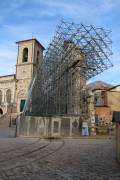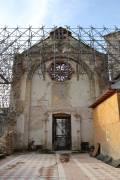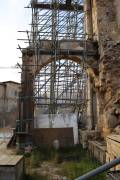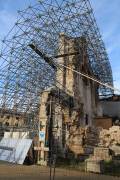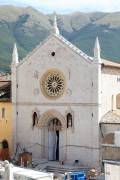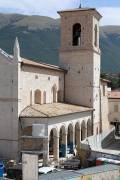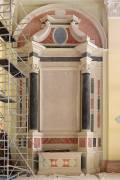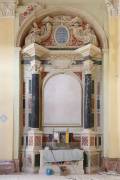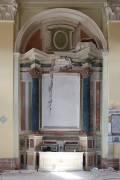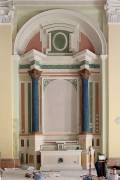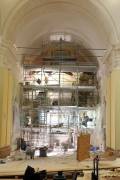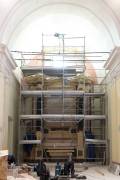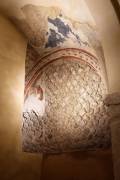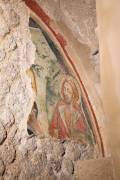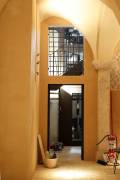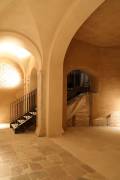The restoration project for the San Benedetto Basilica in Norcia, which was almost completely destroyed by the earthquake that struck on October 30, 2016, follows closely the original volumetric proportions. Preliminary analyses have traced the exact metric data of the external volumes and the details of the internal decorative apparatus, for proper reconstruction. Also included […]
[...]Read MoreThe restoration project for the San Benedetto Basilica in Norcia, which was almost completely destroyed by the earthquake that struck on October 30, 2016, follows closely the original volumetric proportions. Preliminary analyses have traced the exact metric data of the external volumes and the details of the internal decorative apparatus, for proper reconstruction. Also included in the planning. are the restoration of the external façades, the restructuring of floors, the restoring operations for a complete accessibility of the Basilica, the reconstruction of the nave ceiling and the choir area, the reconstruction of the Portico delle Misure, the restructuring of all windows and doors, and the complete rebuilding of the plumbing and electrical systems, as well as a brand new lighting system.
Among the most important interventions, reconstruction of the altars stands out: the altars were made with stucco decorations on a wall support.
The chancel has been completely rebuilt and all accesses to the church have been restructured in order to improve usability, with an additional path to the crypt on the right side of the nave.
The reconfiguration of the access staircase, located on the external side of the building, has also been planned and was made with the same materials and the same construction technique of the existing symmetrical twin ramp on the left side. Similarly, a new connecting corridor, symmetrical to the existing one, and a new ramp that leads to the nave level have been created.
In addition, plans included the total restructuring of all accesses to the Basilica, through the creation of a new staircase and an elevator to allow independent access to wheelchair users for both the crypt and the church nave.
Also included in the interventions, is the reconstruction of the nave ceiling, which has undergone several modifications during restoration works carried out in the Basilica; historical studies and analyses on the changes made to the roof over the years have provided the base of the decision to restructure the wooden ceiling, which dates back to the Baroque period.
The Portico delle Misure, which was connected to the Basilica and had been completely destroyed by the earthquake, will also be faithfully rebuilt. All the surviving elements will be consolidated, reinforced and restored, paired with the reconstruction of the cross vaults. New flooring will be added, as the current one was damaged by the earthquake.
In the crypt, the restoration of the original stone elements has been carried out, along with the integration of sections that have been lost after the collapses. Plans included the complete removal of the existing stone floor of the nave, along with the their replacement with a new flooring in handmade terracotta, characterized by the typical yellow-pink colours of the area and a polished finish.
The paved surfaces outside the Basilica have been restored or repurposed with similar ones to those that existed before the collapse. Namely, the main staircase of the façade and the staircase of the transept’s secondary access have been subjected to a conservative cleaning and restoration operation, with possible replacement of elements that should prove to be unrecoverable. The restoration of all the frames that survived the collapse has also been planned: particular attention was given to the wooden doors of the main and side entrance (transept), as well as the wooden door of the sacristy.
All lost elements have been recreated from scratch, in line with the existing ones. The windows were characterized by artistic stained-glass patterns, which have been partially recovered after the seismic events, in the areas of the apse and transept.
For the two windows of the nave, plans included the supply and installation of new stained-glass windows, which were specifically handcrafted for the Basilica.
An overall upgrade of the electrical system was provided, with integrated control, monitoring systems and low consumption LED lighting that allow for great versatility of use; the audio system upgrade was also included, providing high performance and a clean sound.
The accessibility to the church has been restructured to ensure the elimination of architectural barriers.
Read Less









































